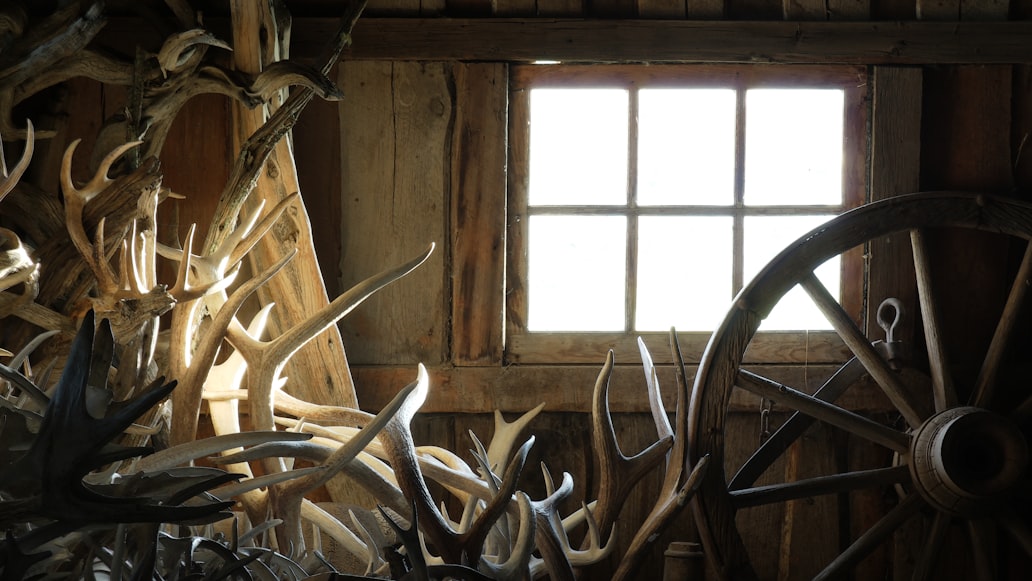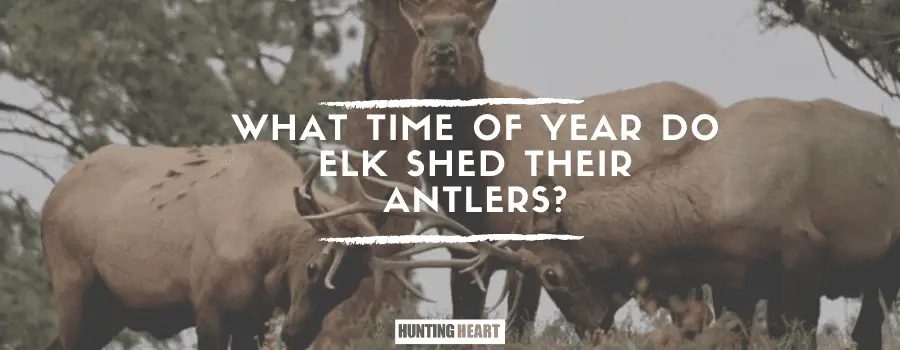As an Amazon Associate I earn from qualifying purchases.
Our Associate portal can be found here
Nothing compares to the excitement of spotting an impressive, 40-pound elk shed with a spread of over four feet. I imagine anyone interested in finding freshly-dropped antlers must be wondering, “What time of year do elk shed their antlers?”
The end of the winter season and the beginning of spring (with a peak in mid-to-late March) are the best time to hunt sheds. This is due to an increase in day length, which causes testosterone levels to drop drastically, making elk shed their velvet and eventually lose the antlers.
Hunting for shed elk antlers has been going on for years. It’s a fun collectors activity, a fantastic way to experience the outdoors, and make money. It is also a sustainable way of obtaining material for crafts and decor. But first, why do elk lose their antlers every year?
Why Elk Shed Their Antlers
From the moment they turn one, elk begin to grow antlers. These majestic features can develop to a whopping 40 pounds (18 kg). But what most people don’t know is that the bulls shed off their antlers yearly and grow a new pair.
Large, symmetrical antlers are most desirable. It’s how alpha bulls fight off weaker males, defend their pride, and demonstrate superiority to attract a more desirable mate. Typically, elk antlers fall due to:
- Injuries
- Poor nutrition
- Declining testosterone levels caused by increasing minutes of daylight.
If an antler breaks or is damaged, a bull will shed that pair and regrow another set, which helps him attract cow elk in the fall. So, what time of year do elk shed their antlers? Read on to find out.
What Time of Year Do Elk Shed Their Antlers?
Beginning in spring and continuing through summer, the increasing periods of light exposure stimulate hormones that promote antler growth. Bull elk can grow an inch of antler a day.

As autumn gets closer, the length of daylight shortens. This causes a biological reaction in which testosterone levels rise, causing bucks to lose their velvet.
Mid-fall, the amount of testosterone reaches peak level. It then begins to drop as we draw into late winter when the length of day increases. As testosterone levels drop significantly, hormones in the bone around the pedicle begin to reabsorb calcium which was initially used to grow the antlers. After a few weeks of this decline, the antlers are shed.
Trails leading to and from a food source or cultivated fields are a hotspot for shed antlers. As are roadsides, fence rows, creeks, ditches, and thick overhanging branches where elk are forced to jump or duck.
5 Things to Do With Shed Antlers
Collect Them
Most shed hunters fall into this category. The whole purpose of looking for antlers is to grow the shed pile. I have heard of collectors who already have barn-fulls but can’t resist the urge to add to the number at the end of every breeding season.
Collecting shed antlers is a lovely hobby, whether you keep the browns for bragging rights or nostalgic purposes. Who knows, you may find prized brown pieces worthy of being mounted. Check the Internet for ideas of where to hunt elk sheds near you.
Sell
Other than collecting, this is probably the best reason people hunt sheds. The price is determined by the condition and quality of the sheds. Typically, darker colored antlers fetch more in the market. Brown elk antlers go for about $10 per pound, while white varieties are $12 for the same amount.
In some places, you can sell 300 class elk for just over $200. More outstanding types like the 400 class elk can go over $1500.
Crafting
People have used animal bones to come up with unique crafts for thousands of years. Antlers are soft bones and are pretty easy to work with. You only need a few simple tools to accomplish a DIY project.
If you’ve never tried it before, here’s a video on how you can craft with antlers..
You can produce ornaments, buttons, knife handles, or a magnificent work of art like a headboard.
Decor
Once I saw a chandelier made from intertwined elk antlers, and I must admit, it was a spectacular sight. I have also seen numerous unique wall mounts made from elk sheds. Unlike crafting, decor requires less skill, which makes it DIY-compatible. Attach a pair to the wall near a door to act as a coat hanger or as creative storage for your jewelry.
Food
Did you know you could use elk antlers to make food items? And I don’t mean throwing the bones into a pot with herbs and spices; there are numerous ways you can manipulate elk sheds for consumption.
Begin by grinding the antler and mixing it with water to make gelatin. Boil for a few minutes, then strain off the solids. Distilled antler powder can also be used as a natural baking soda substitute. And if you have a four-legged companion, elk antlers make great dog chews.
The Bottom Line
Shed antler hunting is an exciting activity, and the experience is memorable. You can also monetize your passion by selling the sheds or creating beautiful crafts or spectacular decor. You must consider what time of year elk shed their antlers to find the best pieces. Shed hunting is undoubtedly a sustainable way of collecting antlers without compromising elk populations.
Amazon and the Amazon logo are trademarks of Amazon.com, Inc, or its affiliates.

36 years old, been hunting and fishing my entire life – love the outdoors, family, and all kinds of hunting and fishing! I have spent thousands of hours hunting hogs and training hunting dogs, but I’m always learning new stuff and really happy to be sharing them with you! hit me up with an email in the contact form if you have any questions.



